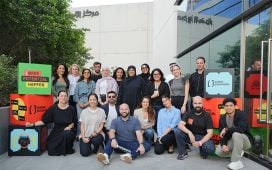Energy company GE Vernova has produced a mini-series called Powering Tomorrow which focuses on energy transition. It shares the stories of nine people working to bring these technologies to life, and examines the role more sustainable, affordable and reliable electricity plays in our lives.
Campaign Middle East spoke exclusively to project leader Adam Tucker, Director of Communications at GE Vernova, and Navdip Dhariwal, a former BBC foreign correspondent, and the co-founder of Miran Media, a creative and film agency that helped produce the films.
Adam Tucker: The goal of the first series of Powering Tomorrow was to capture and inspire audiences with a visually compelling documentary. We n









